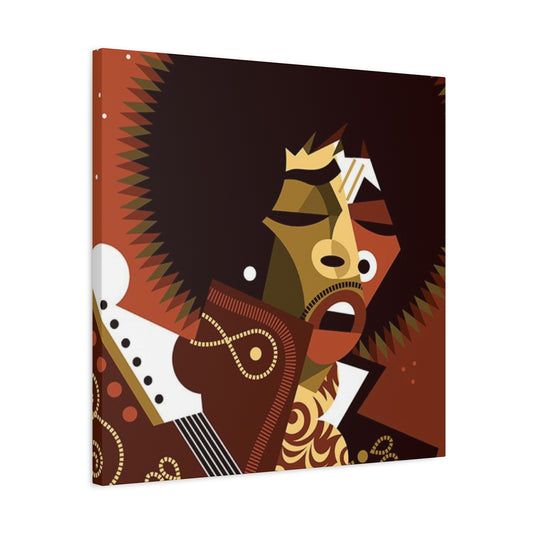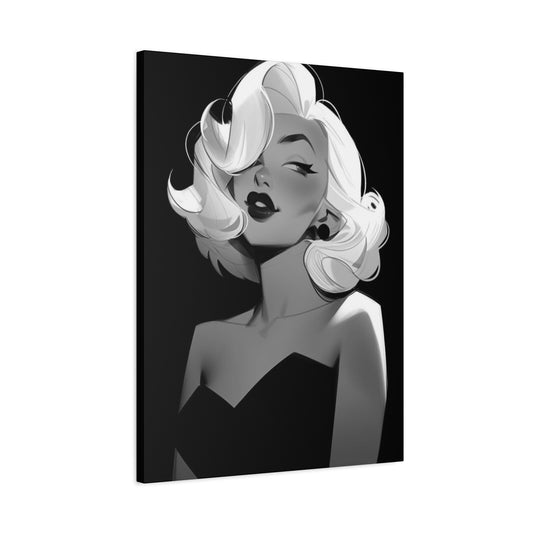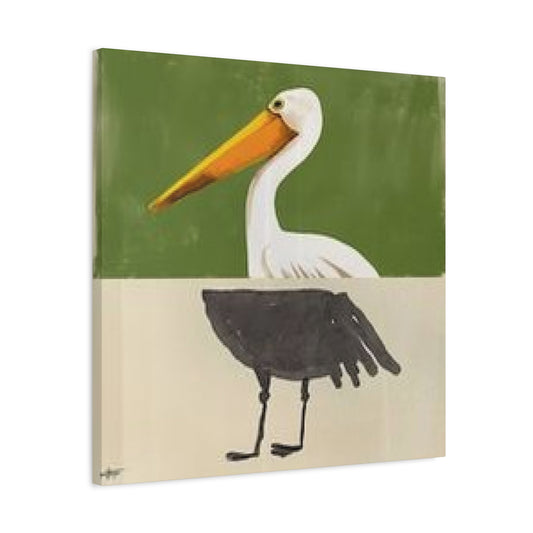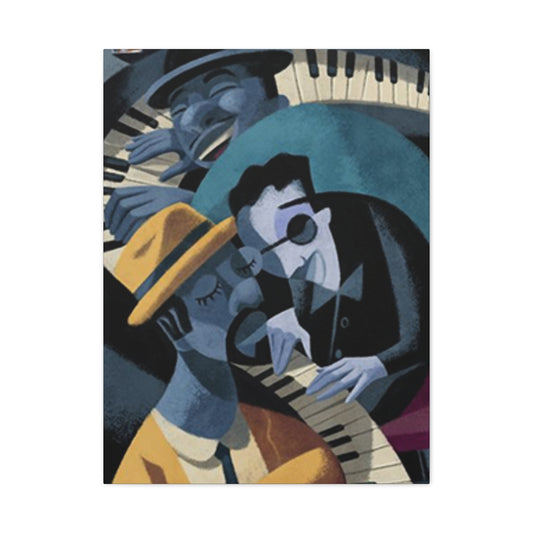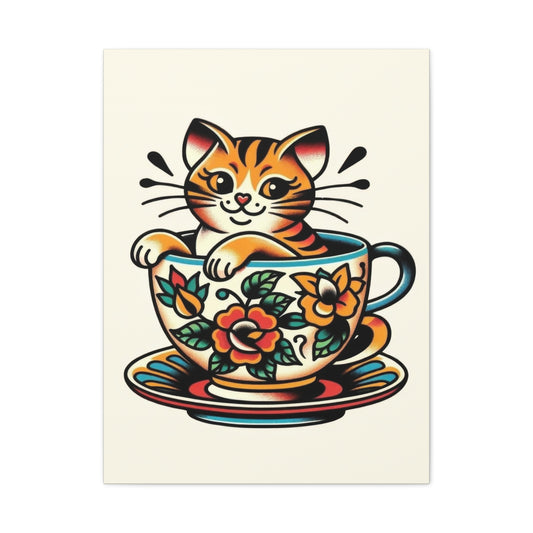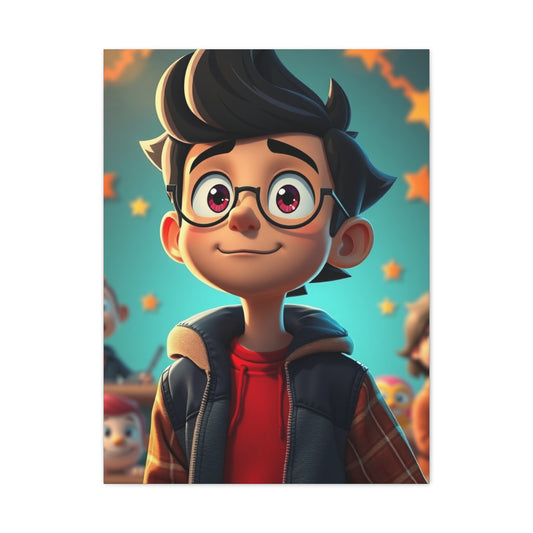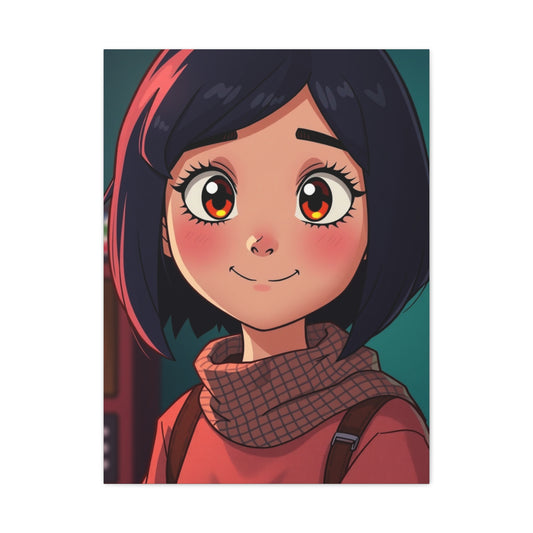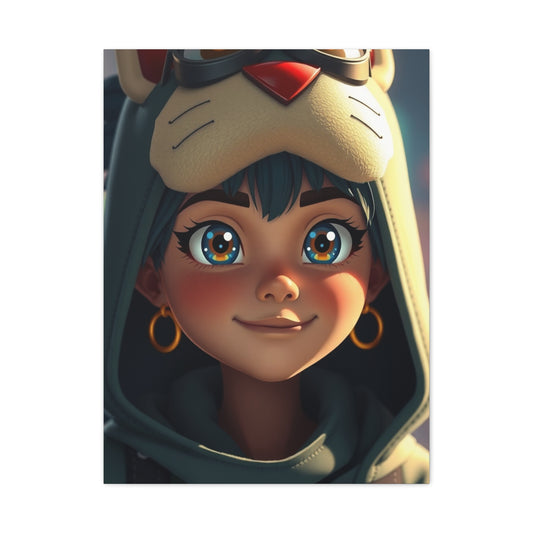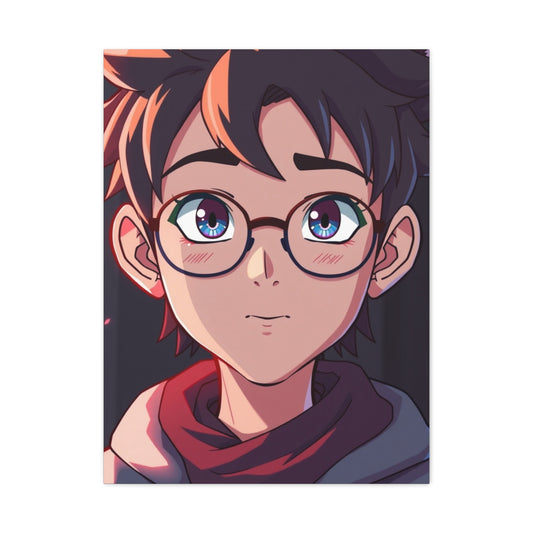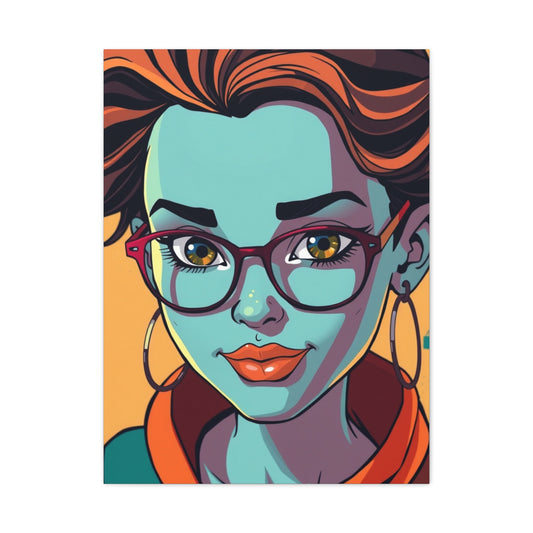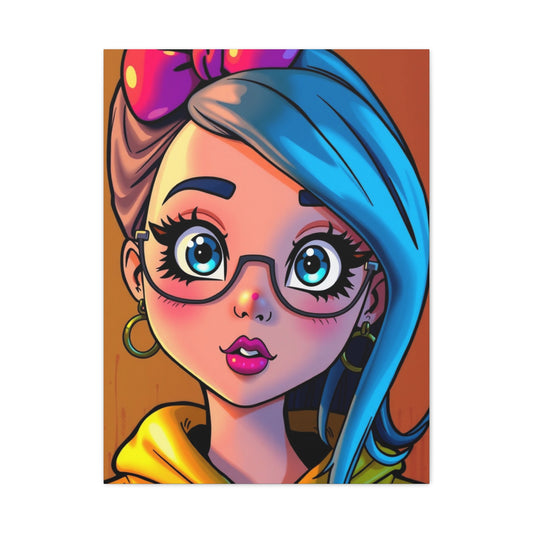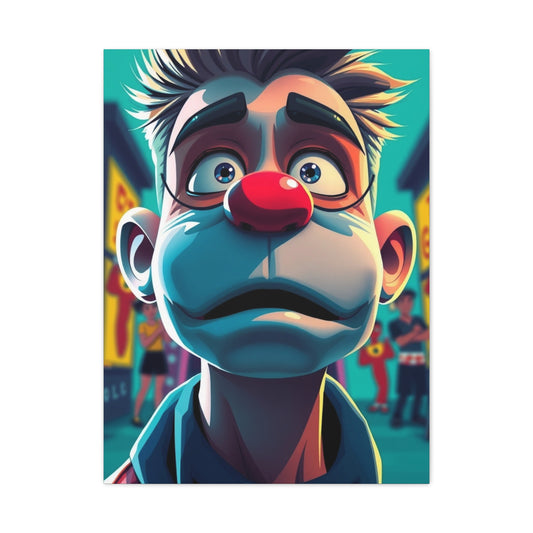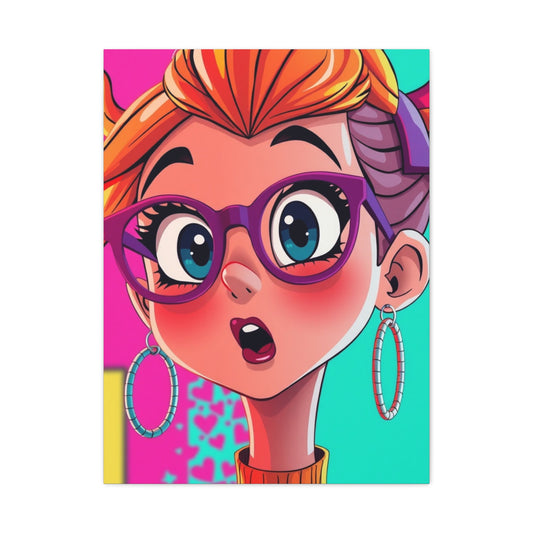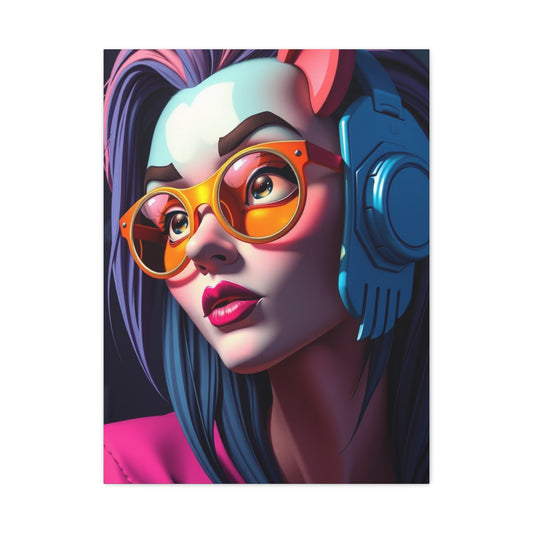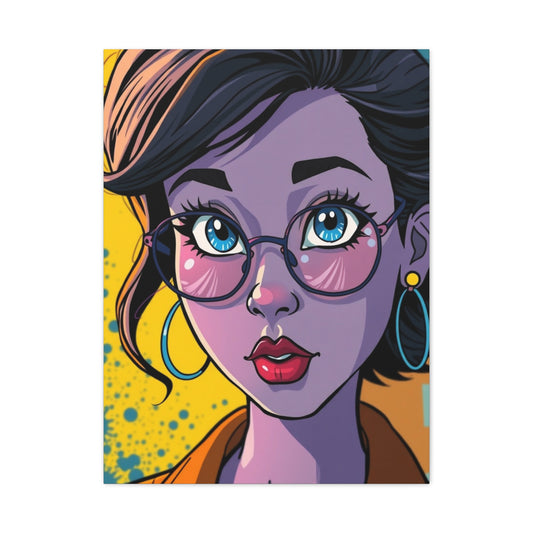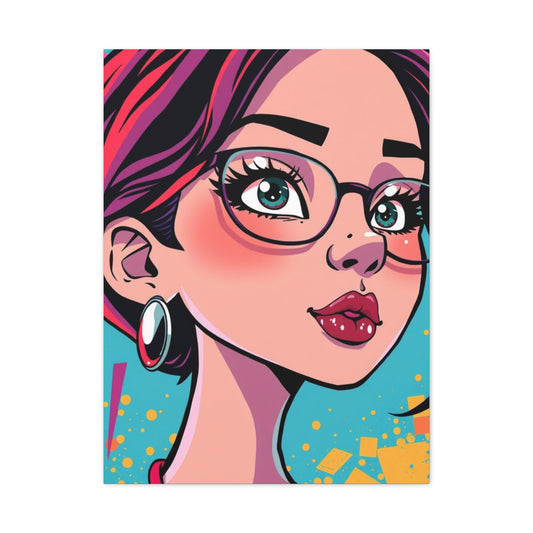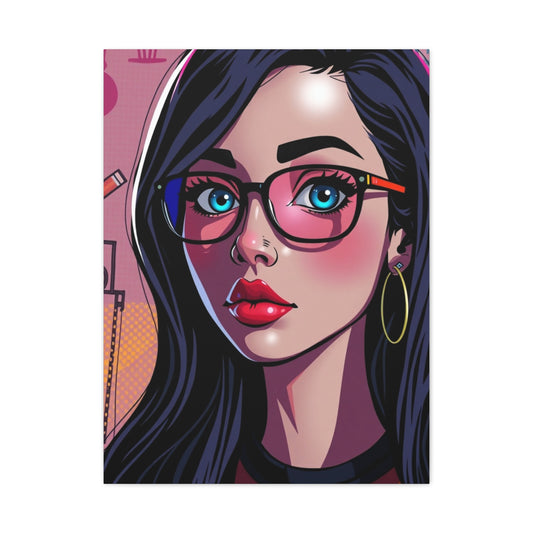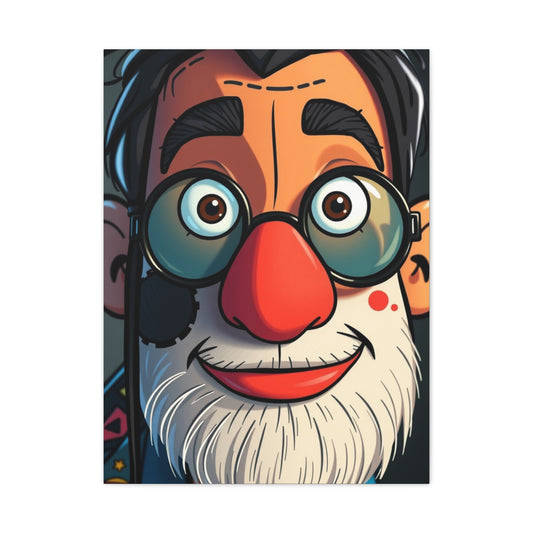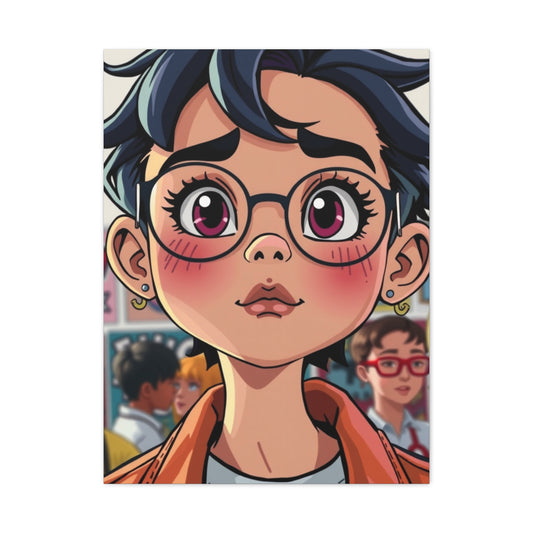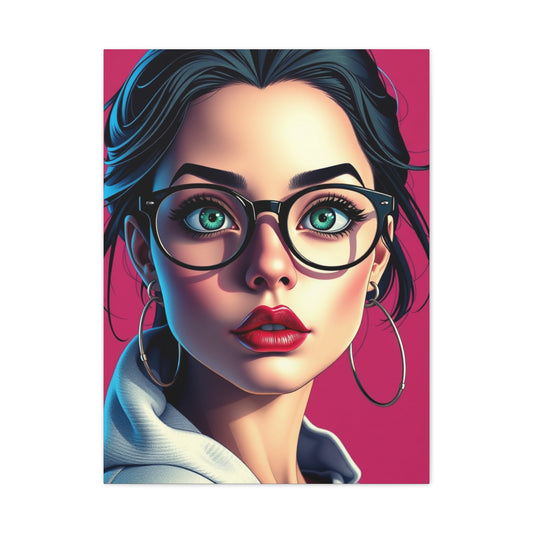Seasonal Style: Wall Art Ideas to Enhance Your TV Area
The wall above the television often goes unnoticed in home design, yet it holds enormous potential for transforming a room. During fall, as temperatures drop and natural light wanes, homes crave warmth, depth, and visual interest. Leaving this area blank can make the living room feel incomplete and sterile, while a thoughtfully decorated wall adds a sense of personality and harmony. Designing the space above a TV is not simply about filling space; it is about creating balance, drawing the eye, and enhancing the room's overall atmosphere. By incorporating texture, natural materials, and seasonal tones, this wall can become the centerpiece of a cozy and inviting living space.
The Importance of Seasonal Design
Seasonal design plays a crucial role in cultivating a home’s atmosphere. Unlike the light and airy aesthetics of summer, fall decorating emphasizes warmth, layered textures, and natural tones. Earthy hues, rich reds, burnt oranges, and muted browns evoke the changing leaves and fading sunlight outside, bringing a sense of nature indoors. By applying these principles to the wall above the television, a room can instantly adopt the mood of the season. Adding depth through layered textures and organic materials creates a visual warmth that complements blankets, rugs, and soft furnishings. The combination of pattern, color, and tactile appeal transforms an otherwise functional wall into a dynamic feature that embodies the cozy essence of autumn.
Choosing the Right Materials for Warmth
When selecting wall art for the space above the TV, materials play as significant a role as design. Natural fibers such as rattan, seagrass, bamboo, and water hyacinth provide a tactile quality that instantly softens stark walls. These materials bring both texture and dimension, which are particularly effective in creating visual balance. Woven baskets, bamboo fans, and rattan wall hangings can be arranged to create rhythm and movement, breaking the monotony of a flat surface. Incorporating handcrafted items enhances the feeling of authenticity and adds a layer of artisanal charm, reinforcing the connection between the indoors and the natural world during the fall season.
Using Shape and Pattern to Add Visual Interest
Shapes and patterns are essential in designing a wall that draws attention without overwhelming the space. Circular and geometric forms bring balance and repetition, creating harmony with the surrounding furniture and architectural lines. Layering multiple pieces, such as woven baskets of varying sizes or overlapping fans, introduces depth while maintaining cohesion. Spiral patterns, intricate weaving, or sunburst designs can evoke movement and energy, reflecting the dynamic qualities of autumn leaves and natural growth. Patterned elements create points of interest that keep the eye engaged, offering both aesthetic pleasure and a sense of warmth.
Layering for Depth and Dimension
A single large piece above the television may provide a central focus, but layering multiple elements adds dimension and richness. By combining various shapes, textures, and colors, a wall becomes more than just decoration; it becomes an experience. For example, arranging a set of handwoven baskets in a staggered formation adds visual rhythm, while pairing a large circular centerpiece with smaller complementary pieces creates a natural hierarchy. Layering materials such as rattan, seagrass, and bamboo within the same composition enhances tactile diversity, inviting both visual and physical engagement. This approach embodies the spirit of autumn, a season characterized by layers, textures, and natural abundance.
Incorporating Color for Seasonal Harmony
Color selection is a subtle yet powerful way to align wall décor with seasonal themes. Fall favors warm, muted tones inspired by nature. Deep reds, burnt oranges, golden yellows, and earthy browns create a welcoming and enveloping atmosphere. These tones not only harmonize with other fall décor elements, such as throws and rugs, but also provide contrast against neutral walls and media units. Integrating color through natural materials ensures that the palette feels organic rather than artificial. Even subtle variations within woven textures can provide color depth, capturing the nuanced hues of autumn without overwhelming the visual field.
Bringing Natural Elements Indoors
One of the most effective ways to elevate the wall above the TV is through natural elements. Artisanship in handcrafted items often draws inspiration from flora and fauna, translating organic motifs into décor. Woven leaves, floral patterns, and spiral designs replicate movement found in nature, reflecting the season’s changes indoors. Introducing these elements not only enhances aesthetic appeal but also promotes a calming and grounded environment. In fall, when outdoor exposure diminishes, natural textures and designs reconnect the interior space with the natural rhythm of the season, fostering warmth, comfort, and visual interest.
The Role of Artisanal Craftsmanship
Handcrafted wall décor carries an inherent value that mass-produced items cannot replicate. Artisanal pieces reflect skill, tradition, and uniqueness, ensuring that each item has its own story and character. Handwoven baskets, bamboo fans, and rattan panels offer subtle imperfections that enhance authenticity and texture, contributing to a cozy and inviting living space. The craftsmanship adds depth, not only visually but also emotionally, as each piece embodies dedication, care, and tradition. This focus on quality and artistry complements the warmth and richness of fall interiors, making the wall above the TV a focal point of both style and substance.
Creating a Balanced Composition
Balance is key to achieving a harmonious design above the television. Too many elements can create visual clutter, while too few can leave the wall feeling sparse. By carefully considering scale, spacing, and symmetry, the space can be transformed into a visually pleasing feature. Circular forms often provide natural rhythm, while grouping similar textures and colors creates cohesion. Mixing large and small pieces, solid colors with patterns, and vertical with horizontal shapes ensures that the wall feels complete without overpowering the room. Achieving this balance is particularly important in the fall, as the goal is to create a warm, inviting space that encourages comfort and togetherness.
Evoking Seasonal Mood Through Wall Décor
The wall above the television serves as an opportunity to evoke a specific mood and atmosphere. Fall is a season of introspection, comfort, and connection with nature. Through the use of texture, pattern, and natural materials, the décor can embody these qualities. Soft curves, warm hues, and intricate weaving patterns evoke the feeling of falling leaves, golden sunlight, and crisp autumn air. Thoughtfully curated arrangements communicate a sense of care and intention, elevating the living room from a purely functional space to one that embodies seasonal warmth, comfort, and aesthetic appeal.
Adding Depth with Intricate Woven Patterns
Intricate woven patterns are one of the most effective ways to bring texture and visual interest to a blank wall above the television. Handcrafted baskets and woven panels introduce depth, breaking the monotony of flat surfaces and creating a dynamic visual experience. Each woven piece is unique, offering subtle variations in pattern, color, and texture that cannot be replicated by machine-made décor. Geometric and spiral motifs, in particular, add a sense of movement and rhythm, drawing the eye across the wall while establishing a cohesive design. When displayed in clusters or staggered formations, these pieces create a sense of organic balance, mirroring the natural layering of leaves and branches in fall.
The tactile nature of woven materials like rattan and seagrass also enhances the warmth of the living space. Unlike metallic or glossy surfaces, these natural fibers diffuse light softly, creating a gentle interplay of shadows and highlights. This subtle visual effect reinforces the feeling of coziness that defines autumn interiors. Moreover, woven décor can be scaled to suit any wall size, from a compact arrangement of four medium baskets to a large installation covering an entire section above the TV. The versatility of these pieces ensures that they complement both minimalistic and eclectic design styles while staying true to seasonal warmth and comfort.
Radiating Warmth Through Sunburst Designs
Sunburst designs are particularly effective for creating a vibrant focal point above the television. Inspired by the radiance of sunlight, these designs often feature radiating lines or rays crafted from natural materials like bamboo or seagrass. The circular symmetry draws attention to the center, establishing a sense of energy and balance that enlivens the living space. Sunburst motifs evoke the golden glow of autumn afternoons, reinforcing the season’s warmth and light even as daylight diminishes.
Handcrafted sunburst pieces can vary in size and intricacy. A large single sunburst serves as a striking centerpiece, while a series of smaller sunburst panels arranged in a grid or cluster adds movement and interest. The combination of natural textures and radiating forms creates both visual and emotional resonance, transforming a plain wall into a feature that invites admiration. These designs work exceptionally well in rooms with neutral walls or minimalist décor, as the natural tones of bamboo or rattan provide subtle contrast without overwhelming the space.
Celebrating Seasonal Charm with Floral and Spiral Motifs
Floral and spiral motifs capture the essence of autumn through organic shapes and delicate craftsmanship. Spiral patterns, often reminiscent of curling leaves or flowing wind, introduce a sense of motion and fluidity to the wall. Floral designs, on the other hand, evoke nature’s softness and abundance, blending seamlessly with warm autumnal palettes. Handwoven baskets incorporating these motifs bring artistry and storytelling into the living room, turning functional wall décor into a celebration of seasonal beauty.
Arranging these elements above the television requires a thoughtful approach. A staggered layout creates natural asymmetry, reflecting the randomness of fallen leaves or twirling vines. Alternatively, symmetrical arrangements can provide a sense of order and harmony, balancing the strong horizontal lines of the television and media console. Pairing spiral and floral motifs together or mixing them with geometric patterns introduces a layer of contrast that enhances depth and texture. The combination of design complexity and natural material ensures that each arrangement feels alive, inviting viewers to linger and appreciate the craftsmanship.
Infusing Vibrancy with Autumn Reds and Earth Tones
Color plays a crucial role in establishing seasonal mood. Deep reds, burnt oranges, and earthy browns are emblematic of fall, creating warmth and inviting energy in living spaces. Incorporating these tones into wall décor above the television can transform a neutral wall into a vibrant focal point. Bamboo folding fans, rattan panels, or woven baskets in autumn-inspired hues provide richness and depth while maintaining a natural aesthetic.
Large pieces in bold red or deep brown can serve as statement elements, capturing attention immediately upon entering the room. Smaller pieces in complementary tones can be arranged around the primary element to create balance and cohesion. Lighting further enhances the effect of these colors; soft, warm light reflecting off natural fibers intensifies the richness of the hues and emphasizes texture. These colors harmonize with other seasonal décor, including throw pillows, blankets, and rugs, creating a unified and inviting fall atmosphere.
Combining Textures for a Cozy Atmosphere
Layering textures is central to creating an inviting and cozy environment in the fall. The wall above the television offers the perfect canvas to mix and match materials such as rattan, bamboo, seagrass, and woven fibers. By combining smooth, intricate weaves with rougher, organic surfaces, the wall gains depth and tactile interest. This approach mimics the multi-dimensional beauty of the outdoors during autumn, from crisp leaves to textured tree bark, bringing the season indoors.
Texture layering also contributes to visual balance. Placing different shapes and sizes of woven pieces in relation to one another avoids monotony and creates a dynamic display. A large central panel with smaller surrounding elements encourages the eye to move naturally across the wall. Incorporating subtle tonal variations within the same material family enhances complexity without introducing discordant colors, allowing the overall composition to remain harmonious and soothing.
Layering Circular Shapes for Visual Rhythm
Circular shapes provide rhythm and repetition, essential elements for establishing a cohesive design. Grouping circular baskets or panels in clusters of varying sizes encourages movement across the wall, echoing the natural forms of leaves, branches, and sunbursts. Layered circular shapes also create depth, especially when pieces overlap or are placed at slightly different distances from the wall surface. This three-dimensional effect enhances the sense of artistry and craftsmanship, inviting viewers to engage with the space more intimately.
Circular motifs work particularly well in fall interiors because they contrast with the linear structure of furniture and architectural features. By softening straight lines, these shapes introduce organic harmony that aligns with the seasonal emphasis on warmth and comfort. Their repetition reinforces the natural rhythm found in autumn landscapes, making the wall above the television a subtle reflection of the outside world.
Minimalist Approaches for Refined Spaces
For those who prefer simplicity, a minimalist approach to wall décor above the television can still evoke warmth and seasonal charm. Large, handwoven seagrass or bamboo panels in neutral tones create a calming backdrop without overwhelming the room. The minimalist aesthetic relies on the quality of craftsmanship and the subtle interplay of texture and light. Even a single oversized woven piece can serve as an elegant focal point, providing visual interest while maintaining a sense of tranquility.
Minimalist arrangements pair well with contemporary, Scandinavian, or Japandi interiors, where clean lines and neutral color palettes dominate. The simplicity of natural fibers enhances the feeling of openness and lightness, balancing the visual weight of the television. Minimalist décor emphasizes the inherent beauty of materials and patterns, allowing texture, weave, and form to stand out. This understated elegance ensures that the space feels intentional, refined, and seasonally appropriate without excess ornamentation.
Balancing Scale and Proportion
The success of wall décor above the television depends heavily on scale and proportion. Oversized pieces can overwhelm a small wall, while too many small items can feel cluttered. Understanding the relationship between the television, furniture, and wall space is critical for creating harmony. Large woven panels or fan-shaped pieces often work best as a central anchor, while smaller elements can be arranged around them to complement the composition.
Proportion also affects the perception of space. Taller arrangements draw the eye upward, making ceilings appear higher, while horizontal layouts elongate the wall, providing a sense of expansiveness. Effective combinations of height, width, and depth ensure that the décor enhances the room rather than competing with existing elements. By carefully considering scale, homeowners can create a balanced and visually engaging display that elevates both the wall and the overall living area.
Creating a Seasonal Narrative
Every piece of wall décor can contribute to a seasonal story. In the the fall, this narrative emphasizes warmth, comfort, and connection with nature. Circular weaves represent turning leaves, spirals reflect gentle autumn winds, and warm tones evoke the rich color of fall foliage. Arranging these elements thoughtfully creates a visual tale that engages viewers and enriches the living space. The wall above the television becomes more than decoration; it embodies the season itself.
Seasonal narratives can also be reinforced through thoughtful repetition. For instance, clusters of small red-toned baskets interspersed with natural seagrass panels mimic the scattering of autumn leaves across the ground. A large sunburst panel represents the low, golden sunlight typical of fall afternoons. The resulting composition provides continuity and storytelling, making the wall a dynamic part of the home’s seasonal experience.
Integrating Functionality With Aesthetic Appeal
Wall décor above the television can blend both form and function. While aesthetic appeal is primary, functional design can enhance practicality. For example, lightweight woven panels or baskets can double as storage or display areas for small items, combining artistry with utility. Some designs also allow for modular arrangements, making it possible to shift compositions with the seasons or personal preference.
The combination of beauty and functionality ensures that the wall serves multiple purposes. It remains a focal point, a storytelling canvas, and potentially a practical surface, all while maintaining warmth and visual interest. This versatility is particularly useful in family living areas, where walls must accommodate entertainment, relaxation, and seasonal decoration seamlessly.
Enhancing Wall Décor Through Lighting
Lighting is a powerful tool for amplifying the impact of wall décor. Soft, warm lighting highlights textures and patterns in woven baskets, rattan panels, or bamboo fans, creating shadows that add depth and dimensionality. Accent lighting directed from above or below can emphasize focal points, turning simple arrangements into captivating displays.
Natural light during fall, combined with warm artificial light, enhances the richness of earthy tones and deep reds, reinforcing seasonal ambiance. Lighting also affects the perception of space, making walls feel more inviting and intimate. Properly illuminated wall art transforms the television area into a cozy retreat, where aesthetics and comfort coexist in harmony.
Planning the Layout Above the Television
Before hanging any wall décor, planning the layout is essential. The space above the television can vary widely depending on the room’s dimensions, furniture arrangement, and viewing angles. Consider the television as the central anchor and design the arrangement around it. Start by measuring the wall area, noting both the width and height available. Keep in mind that the visual weight of the television is significant, so the surrounding décor should balance rather than compete with it.
Creating a physical or digital mockup can help visualize the final arrangement. Paper cutouts or cardboard templates of each intended piece allow experimentation with spacing and positioning. This method prevents unnecessary holes in the wall and ensures the final composition is harmonious. Consider the eye level of viewers seated in the room; pieces that are too high or too low can disrupt the flow and diminish the cozy ambiance. A well-planned layout provides a foundation for cohesive design, ensuring each element contributes meaningfully to the overall aesthetic.
Choosing Focal Points for Visual Impact
Selecting a central focal point is critical for guiding the viewer’s eye. Large woven baskets, sunburst panels, or bamboo fans can serve as the anchor of the composition. The focal point should reflect the desired mood of the room, whether that is warmth, sophistication, or artistic intrigue. Surrounding pieces should complement rather than compete with the focal element. Smaller baskets, panels, or decorative objects can be arranged around the centerpiece to create rhythm and balance.
Contrast in size, color, and texture enhances visual impact. For instance, a bold red bamboo fan can be paired with neutral woven baskets to provide dynamic tension and interest. Positioning the focal point slightly off-center or incorporating asymmetry introduces a sense of organic flow, reminiscent of natural autumn landscapes. Focal points guide the arrangement and ensure that the wall remains visually engaging without feeling overcrowded.
Layering and Staggering for Depth
Layering is a key strategy for adding depth to wall décor. Placing elements at varying heights and distances from the wall introduces a three-dimensional effect that enhances texture and visual interest. Overlapping pieces, such as a large circular basket partially covering smaller woven elements, can create depth while maintaining cohesion.
Staggering the arrangement also contributes to a natural, organic aesthetic. Rather than lining elements perfectly in rows or grids, vary the spacing and alignment to mimic the randomness found in nature. This approach is particularly effective for fall décor, as it mirrors the scattered leaves, swirling wind, and irregular patterns of the season. Layering and staggering provide movement and rhythm, making the wall feel lively and inviting.
Integrating Natural Materials for Seasonal Coziness
Natural materials are central to creating a cozy, autumnal atmosphere. Rattan, seagrass, bamboo, and water hyacinth each bring unique texture, tone, and tactile quality. These materials absorb light differently, casting subtle shadows that enhance depth and richness.
Using natural fibers also establishes a connection with the outdoors, reflecting the textures and colors of fall landscapes. Incorporating handcrafted elements made from these materials reinforces authenticity, making the wall feel curated rather than artificially styled. Combining smooth, polished surfaces with rougher, organic textures creates contrast that invites closer inspection and tactile appreciation. Natural materials are versatile, complementing a wide range of interior styles from boho and coastal to contemporary and minimalist.
Creating Symmetry and Asymmetry
Balance is essential in any composition above the television. Symmetry brings order and stability, which can be particularly effective in modern or minimalist spaces. Matching pairs of woven baskets or evenly spaced circular panels create harmony and structure. Symmetry communicates intentionality, offering a polished and refined appearance.
Asymmetry, on the other hand, introduces movement and visual interest. By offsetting larger pieces with smaller ones or mixing different shapes and textures, a wall can feel dynamic and organic. Asymmetry works well for eclectic, bohemian, or layered interiors, reflecting the natural irregularities of autumn. A balanced combination of symmetry and asymmetry allows the wall to maintain cohesion while avoiding monotony.
Incorporating Color Strategically
Color selection is pivotal for seasonal styling. Autumnal hues, including deep reds, burnt oranges, golden yellows, and earthy browns, create warmth and richness. Use these colors strategically to highlight focal points, create contrast, and reinforce the seasonal mood. Neutral tones like beige, cream, and natural seagrass balance bolder accents, preventing the arrangement from appearing too heavy or overwhelming.
Subtle color variations within materials, such as different shades of rattan or slight tonal shifts in woven fibers, can add depth without introducing discordant hues. Layering colors thoughtfully ensures that the wall feels harmonious while evoking the natural palette of fall. Color relationships also influence perception of scale and balance, making careful selection essential for a cohesive composition.
Choosing the Right Hardware for Hanging
The stability and security of wall art are critical, particularly for heavier woven pieces or layered arrangements. Use appropriate hardware such as wall anchors, screws, or hooks designed to support the weight of each element. Consider adjustable hanging systems that allow minor repositioning for optimal alignment.
For clustered or layered arrangements, ensure that each piece is securely mounted to prevent shifting or tilting. Invisible mounting options, such as French cleats or hidden hooks, preserve the aesthetic appeal while providing durability. Attention to hanging techniques reflects both practical consideration and design sensibility, ensuring that the wall remains visually striking and functional over time.
Grouping Elements for Cohesion
Grouping elements creates a sense of unity and purpose in the arrangement. Pieces that share similar materials, patterns, or color palettes naturally complement one another and establish a cohesive visual story. Grouping can be linear, circular, or organic, depending on the desired style.
Clusters of three to five elements are generally effective for creating balance without overcrowding. Larger focal pieces can anchor smaller surrounding elements, creating a visual hierarchy that guides the eye. The key is intentionality: each element should contribute meaningfully to the overall composition, reinforcing seasonal themes and stylistic goals.
Using Negative Space Effectively
Negative space, or the empty area around wall décor, is as important as the elements themselves. Allowing breathing room around focal points prevents visual clutter and emphasizes the importance of each piece. Negative space also enhances the perception of scale, making smaller pieces feel more prominent and larger pieces more grounded.
In autumnal styling, negative space can simulate the openness and calm of nature, echoing the stillness of bare branches or empty forest floors. Balancing occupied and empty space ensures that the arrangement remains visually appealing while evoking a sense of seasonal tranquility.
Enhancing Texture with Layered Materials
Layered materials amplify texture and tactile appeal. Combining woven fibers with smooth bamboo panels or rattan shelves adds complexity and richness to the wall. This multi-material approach creates interest at multiple levels, encouraging viewers to engage more deeply with the arrangement.
Layered materials also interact with light differently, producing subtle shadows and highlights that enhance the perception of depth. In the fall, this technique reinforces the cozy and dynamic quality of the space, making the wall feel alive and inviting. Layering ensures that the design remains multidimensional, visually stimulating, and seasonally appropriate.
Styling for Seasonal Cohesion
To fully embrace the spirit of fall, the wall above the television should harmonize with other seasonal décor. Incorporate elements such as throw blankets, pillows, and rugs in complementary colors and textures. Metallic accents in muted gold or bronze can evoke the subtle shimmer of autumn light. Small touches of greenery, dried flowers, or natural branches can extend the seasonal narrative from the wall to the rest of the living area.
Consistency across textures, colors, and materials ensures a unified aesthetic. The wall becomes a central element that anchors the room’s seasonal styling, tying together furniture, accessories, and lighting to create a cohesive environment. Every choice, from the arrangement to the smallest accent, contributes to the overall warmth and charm of the space.
Positioning for Optimal Viewing
Placement above the television must consider viewing comfort. Artwork positioned too high can cause neck strain, while pieces too low may compete with the screen. Aim for a midpoint that aligns with the natural sightlines of seated viewers. Layered arrangements should maintain this ergonomic balance, ensuring that visual appeal does not compromise comfort.
Proper positioning also affects perception of scale. When centered relative to the television, artwork appears integrated and intentional. Off-center arrangements can create asymmetrical interest, but careful measurement and spacing are required to maintain cohesion. Ergonomics and aesthetics should work hand in hand to ensure the wall is both functional and visually striking.
Lighting to Highlight Wall Décor
Lighting enhances every aspect of wall décor. Accent lighting, such as directional spotlights, wall sconces, or LED strips, can emphasize texture, color, and pattern. Soft, warm light reinforces the fall ambiance, highlighting the natural fibers and intricate weaves of handcrafted pieces.
Consider layering lighting sources. Ambient light provides overall warmth, while task or accent lighting draws attention to specific elements. Dimmer controls allow seasonal flexibility, adjusting intensity to match time of day and mood. Thoughtful lighting ensures that the wall above the television remains a focal point, whether during daylight hours or cozy evening gatherings.
Maintaining and Updating Seasonal Displays
Wall décor should remain adaptable to evolving seasonal trends and personal taste. Handcrafted pieces offer longevity and versatility, but arrangements can be refreshed to reflect changing styles or seasonal shifts. Rotating elements, swapping colors, or introducing small accent pieces keeps the wall dynamic and engaging.
Maintenance is also important. Dust and clean woven and natural materials regularly to preserve their appearance and texture. Periodically check mounting hardware to ensure stability. Proper care prolongs the beauty and integrity of the installation, ensuring that the wall remains a stylish focal point year after year.
Integrating Seasonal Accessories With Wall Art
Wall art above the television can be enhanced through complementary seasonal accessories. Autumn inspires textures, colors, and motifs that extend beyond the wall itself. Accessories such as cozy throws, decorative pillows, woven baskets, and dried foliage reinforce the seasonal theme. Carefully selected items should echo the tones, textures, and patterns of the wall décor, creating a unified and immersive experience. Incorporating natural materials like wood, rattan, and seagrass into accessories further strengthens the organic, warm aesthetic of fall interiors. The goal is to create harmony between the vertical display above the television and the horizontal surfaces of furniture and shelving, establishing continuity throughout the living space.
Choosing Complementary Color Palettes
Color coordination is essential for achieving a cohesive look. Autumnal shades, including burnt orange, deep red, muted gold, and earthy browns, serve as the foundation for the color palette. Neutrals like beige, cream, and soft gray balance these warmer tones, ensuring that the overall aesthetic feels grounded rather than overwhelming. Incorporating these colors into both wall art and surrounding accessories creates a seamless visual flow. For instance, a set of woven baskets above the television in natural seagrass tones can be paired with throw pillows in complementary reds and oranges, connecting the wall décor to the rest of the living room harmoniously and invitingly.
Combining Multiple Wall Art Styles
Mixing wall art styles above the television adds dimension and personality. Handwoven baskets, bamboo fans, and rattan panels each bring unique texture and design elements. Combining these styles can create an eclectic, layered look that mirrors the complexity of nature during fall. When mixing styles, it is important to maintain cohesion through shared color schemes, complementary textures, or repeated patterns. For example, a circular rattan panel can be paired with a floral-patterned woven basket and a small bamboo fan, creating variety while maintaining a sense of balance. This technique enhances visual interest and prevents the display from feeling monotonous.
Enhancing Texture Through Layering
Layering remains a central strategy for depth and dimension. Overlapping pieces, combining different textures, and varying the distance from the wall create a three-dimensional effect. Layering draws attention to intricate details and highlights the craftsmanship of each piece. For example, a large woven basket can serve as a backdrop for smaller bamboo fans, creating a dynamic interplay between textures and patterns. Layering also encourages the viewer to explore the composition more closely, making the wall above the television an engaging focal point. By thoughtfully layering elements, the wall can capture the tactile richness and layered beauty of the fall season.
Utilizing Vertical and Horizontal Space
Effective use of vertical and horizontal space ensures balance and proportion. Taller arrangements draw the eye upward, emphasizing ceiling height and creating a sense of grandeur. Horizontal arrangements provide stability and anchor the television within the overall composition. Combining both vertical and horizontal elements allows for flexibility and visual rhythm. For example, a vertical stack of small woven panels can be paired with a horizontal arrangement of rattan panels or bamboo fans, creating interplay between directions that mimics the natural forms of trees and branches during autumn. Proper spatial organization ensures that the wall feels harmonious and complete without overcrowding.
Creating Focal Points With Statement Pieces
Statement pieces are essential for anchoring the design above the television. Bold elements such as a large sunburst panel, a red bamboo fan, or an oversized circular basket immediately draw attention and establish the central focus. Surrounding elements should complement the statement piece without competing for attention. Using color, texture, or scale variations helps integrate smaller pieces into the composition, reinforcing hierarchy and guiding the viewer’s eye naturally across the wall. Statement pieces should reflect the desired mood of the room, whether that is warmth, elegance, or seasonal charm, serving as the foundation of the overall design.
Harmonizing Patterns and Shapes
Pattern and shape coordination is critical for visual cohesion. Geometric patterns, spirals, and floral motifs each bring a distinct character to the display. Combining shapes thoughtfully—such as circular baskets with angular panels—creates contrast while maintaining balance. Repetition of patterns in varying scales can tie different pieces together, establishing rhythm and continuity. For example, repeating spiral motifs across several woven baskets creates a sense of movement that mirrors falling leaves, while maintaining visual consistency. Harmonizing shapes and patterns ensures that the composition feels intentional and aesthetically pleasing.
Integrating Lighting to Highlight Wall Décor
Lighting enhances the visual impact of wall décor above the television. Layered lighting strategies, including ambient, task, and accent lighting, can bring depth, texture, and warmth to the display. Soft, warm light highlights the natural fibers of woven baskets and bamboo panels, creating subtle shadows that emphasize texture. Directional spotlights or wall-mounted sconces can draw attention to focal points, while indirect lighting softens the surrounding area for a cozy, inviting ambiance. In fall interiors, lighting is particularly important for enhancing seasonal tones and creating a comfortable, visually engaging atmosphere.
Coordinating With Surrounding Furniture
The arrangement above the television should be coordinated with surrounding furniture to maintain balance and visual continuity. Media consoles, coffee tables, and side tables provide additional surfaces for seasonal décor, allowing the wall and furnishings to work together as a cohesive unit. Choosing complementary materials, such as wood or rattan, reinforces the natural, autumn-inspired aesthetic. Color harmony between wall décor and furniture enhances unity, while varying texture and height prevent the space from feeling static. Thoughtful integration ensures that the entire living area feels intentional, cozy, and visually appealing.
Seasonal Rotations and Updates
Updating the wall décor above the television seasonally keeps the design fresh and relevant. Fall is an ideal opportunity to introduce richer textures, warmer colors, and layered materials that reflect the changing environment. Lightweight and modular wall art allows for easy rotation while maintaining the structural integrity of the display. Seasonal updates also provide an opportunity to experiment with new arrangements, textures, and patterns, keeping the space engaging and aligned with current trends. Regularly refreshing the display reinforces the sense of care and attention given to the living space.
Maintaining and Preserving Wall Art
Proper maintenance is essential to preserve the beauty of handcrafted wall décor. Natural materials like rattan, bamboo, and seagrass should be dusted regularly and kept away from direct sunlight or moisture to prevent fading and deterioration. Checking the stability of hanging hardware ensures that pieces remain secure over time. Preserving the integrity of the materials and craftsmanship ensures that the wall above the television continues to enhance the room’s aesthetic and seasonal appeal for years.
Integrating Art and Storytelling
Wall art above the television can convey both style and narrative. Each handcrafted piece tells a story of artisanal skill, cultural heritage, or natural inspiration. Arranging pieces thoughtfully allows homeowners to curate a visual narrative that celebrates autumn, evokes warmth, and communicates personal taste. Integrating storytelling into design makes the wall not just a decorative element, but a reflection of the homeowner’s values and creativity. This approach enhances the emotional resonance of the space, making it feel intimate and meaningful.
Using Multi-Dimensional Arrangements
Multi-dimensional arrangements create depth and sophistication. Layering pieces at varying distances from the wall, incorporating different textures and heights, and combining natural materials with subtle metallic accents produce a rich visual tapestry. This technique encourages the eye to explore the composition fully, transforming the television area into an interactive focal point. Multi-dimensional arrangements capture the complexity and layered nature of autumn, mirroring the richness of seasonal landscapes indoors.
Creating a Cohesive Living Room Experience
The wall above the television should complement the broader living room design. Integrating colors, textures, and patterns from surrounding textiles, furniture, and accessories ensures a unified aesthetic. Consistency in material choices, such as woven fibers, wood, or natural tones, reinforces the seasonal narrative. Coordinating the wall décor with lighting, furniture placement, and other decorative elements establishes a holistic living room experience that feels intentional, harmonious, and inviting.
Styling Tips for Maximum Impact
Practical styling strategies enhance the effectiveness of wall décor above the television. Consider grouping pieces in odd numbers, such as three or five, to create natural balance and interest. Incorporate a mix of large and small elements to establish hierarchy and scale. Allow negative space around focal points to prevent visual clutter. Layer materials thoughtfully to emphasize texture and depth. Use complementary seasonal accessories throughout the room to reinforce the aesthetic. These strategies collectively ensure that the wall becomes a central feature that elevates both style and ambiance.
Conclusion:
Transforming the wall above the television is an opportunity to create a visually engaging, warm, and inviting living space. Through thoughtful selection of materials, colors, patterns, textures, and lighting, the blank wall becomes a central element that embodies the spirit of autumn. Integrating handcrafted artistry with practical design considerations allows for a balance between aesthetics and functionality. By applying these advanced styling techniques, homeowners can craft a harmonious, layered, and immersive environment that celebrates the beauty, warmth, and richness of the fall season.

